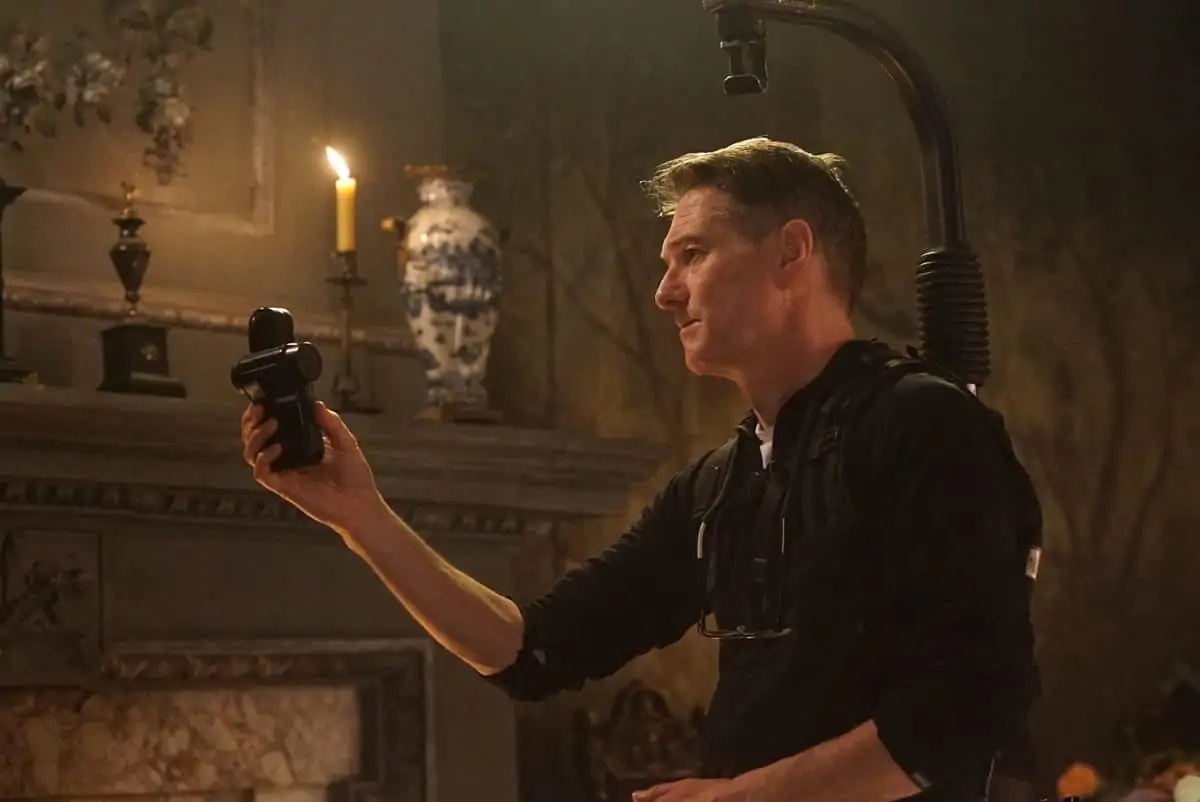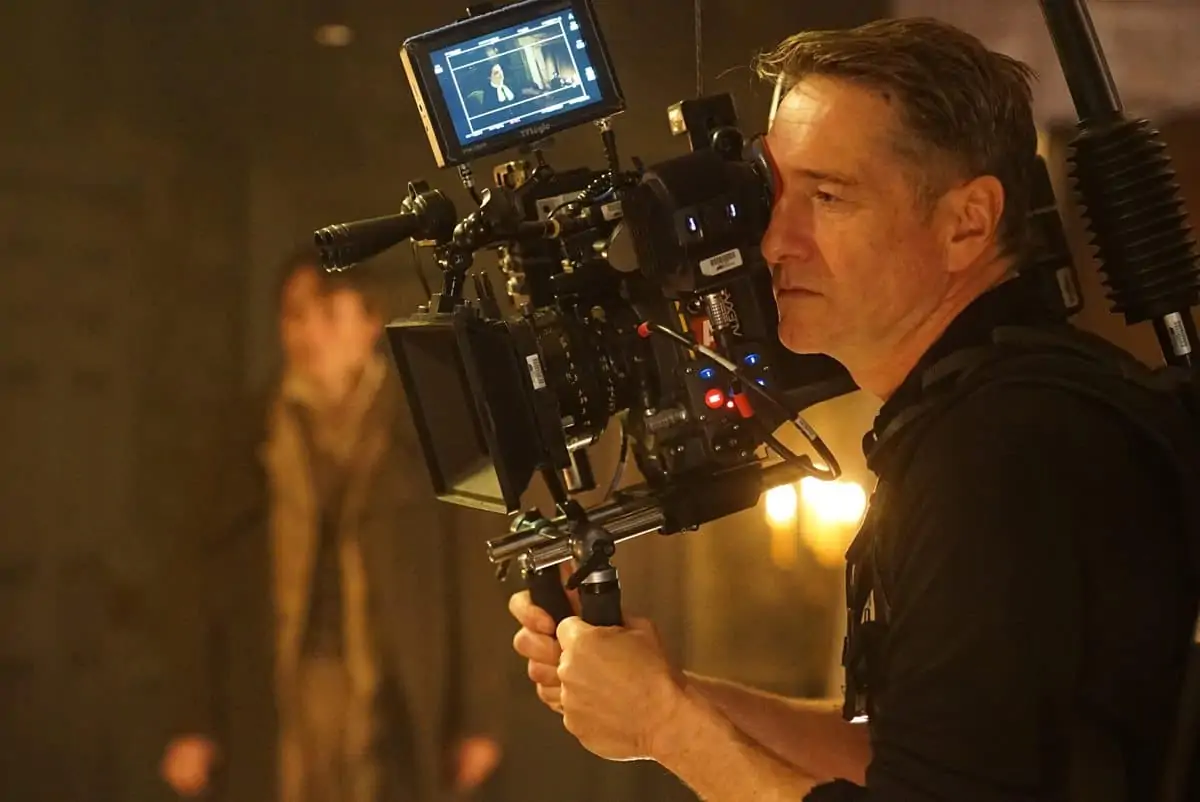Meet... The Future
President's Perspective / Mike Eley BSC
I can remember the moment I fell in love with cinema. It was a hot summer’s day in the early seventies and I, aged eleven, was kicking around at home, restless and bored.
On a whim, I decided to go to the pictures, to the local ABC cinema. I had little idea what was on. Fortunately, what was on was an ‘A’ certificate, so it was easy for me to negotiate myself in.
As I remember it, the auditorium was near empty. I felt as if I had the place to myself. The lights went down and following the ads for Kia-Ora and The Bengal Lancer Restaurant (”…just fifty yards from this theatre”), it was time for the main feature, Butch Cassidy And The Sundance Kid (1969, dir. George Roy Hill), starring Paul Newman, Robert Redford and Katharine Ross.
If you recall, the film starts with a frame-within-a-frame, a flickering, sepia image of cowboys and renegades – the legend already immortalised – with the sound of an old projector on the soundtrack enhancing the power of the moving image. It seemed like a homage to cinema itself. What better way to fall under the spell? Never mind that the ensuing hour and forty-five minutes being just about the most entertaining in movie history, I was hooked, high on what I thought to be an amazing mixture of private and public pleasure. Communal (OK, there was hardly anyone else there) and yet exclusive. By the way, I had no conception of there being a cinematographer involved. Only much, much later did I learn the name of Conrad Hall ASC.
The trigger for this memory was being on a recent long-haul flight, trying to watch a movie on the small screen attached to my seat, angling it so as to avoid reflected light, the headphones laying idly in the ill-fitting socket rendering every other line of dialogue a distant hiss. I gave up. Where was the magic? Where was the immersion? Is this how it was meant to be?
Well, it doesn’t matter; it’s the way it is. Travel these days on any tube or bus and you will, more often than not, see someone watching a film or a big-budget television production on a screen no bigger than the size of the back of their hand, and invariably held within a few inches of their nose, earphones wires dangling from their ears. An immersion of sorts I suppose. These devices, designed for view-ability in adverse conditions are super-bright and high in contrast. You might think it was what UHD and HDR were designed for.
"We are today struggling against forces that see the accessibility and ‘flexibility’ of digital technology as being an invite to meddle.
It’s crucial we retain control. It should be the author’s work, as intended to be seen. As cinema enters a new and exciting age, that becomes ever more an imperative."
- Mike Eley BSC
And we, as cinematographers, are having to embrace and deliver this vivid injection of light and super high contrast known as ‘content’, thereby propping up the sale of TVs and devices. And just as the products are being pushed toward the consumer, so a warped utilisation of UHD and HDR is being pushed toward those producing that content. Too often, the extreme is presented as the norm. Would you drive your car at 100mph everywhere you went – to the shops, on the school-run – just because the number is there on the speedometer? I’ve seen enough demos of these formats to start to worry that unless your rods and cones are singed from the get-go, then it ain’t the real deal.
Cinematographers have struggled for many years to remain involved in post production and the grading of their work. Perceived as being below-the-line – the ludicrousness of that never fails to hit home when you consider that cinema is the image – we are today struggling against forces that see the accessibility and ‘flexibility’ of digital technology as being an invite to meddle. It’s crucial we retain control. It should be the author’s work, as intended to be seen. As cinema enters a new and exciting age, that becomes ever more an imperative.
Ever since the early 1950s, cinema has fought to preserve its place at the very top of the entertainment tree, to be an ‘event’, whether it be a Leicester Square premiere or a midweek matinée in Romford. We all should fight to preserve that, no matter if it be film projected, laser projected or LED. The technology of convenience has opened up a side road that is in many ways impressive and intriguing, but it will never be spectacular or awe-inspiring.
2017 saw cinema attendance increase in the UK for the third year running after a couple of wobbly years (2013 and 2014), during which many thought they heard the tolling of the bell for large screen cinema presentation. Now, one can argue as to the merit and origin of the movies that take the lion’s share of the revenue in these bumper years (invariably big US studio blockbusters), but it’s heartening to know that not only does a gem of a low-budget indie, by the law of averages, have a greater chance of finding an audience, but also that somewhere, in a town far, far away, an eleven year old is having an epiphany that will tie him or her to the moving image for life.
Mike Eley BSC
President
British Society Of Cinematographers




